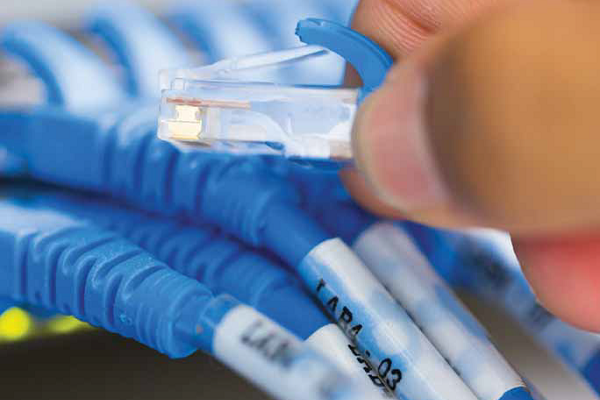Fundamentals of the network
A stable network is the new heart of every smart home, writes integrator Indigozest’s managing director, Nicolai Landschultz.
On a very basic level networking is everything that we do to distribute data packets around the home as well as to and from the internet. This includes wired and wireless networks, but it’s also the other types of networks that we don’t necessarily think about in the same way, such as Zigbee, Bluetooth and Z-wave.
Almost every smart home device requires some form of data network. There are a few exceptions where we would use serial connections or infrared signals, but the norm is very much on data networks. TVs are seemingly one of the last bastions of devices getting IP control over the past couple of years. It’s not yet ubiquitous, but a growing number of manufacturers now support it.
ADVERTISEMENT
Without a good network in place, the fact is that you’re unlikely to get a smart home that works consistently. The data network infrastructure comprises cabling, switches, routers, firewalls, access points and the equipment that, ultimately, connects to it.
It’s absolutely key that you choose equipment that works solidly and performs consistently, just like you would for the control system, sound system, etc. On that note, we never find that the stability of the ISP provided router is particularly good, neither is the WiFi coverage nor at a basic level will the number of ports be anywhere near sufficient.
That’s why it is one of the first pieces of kit to consider replacing when designing your customer’s network. And, it becomes a clear area where your expertise can be communicated to the customer and will add value.
To ensure a solid networked infrastructure, good WiFi coverage is a fundamental. As with almost any design, don’t just cater for the here and now, but ensure there is some element of future proofing built in.Also, make sure you plan for more than just sufficient data cables so that there is room for future coverage. As a minimum, you should adhere to CEDIA’s wiring guidelines.
One of the most common questions that we get from clients is why can’t everything be done over wireless?
Well, plenty can be achieved with wireless, of course. However, even in a wireless-only install, we still need to have a number of hard-wired access points to ensure coverage. This takes us back to having a networked infrastructure. Yes, you could start using mesh-based WiFi but now you have additional latency to consider, and, in any case, these access points need power so there is still some form of cable to consider.
With WiFi, you must be careful to plan your channels to make sure that they don’t overlap and to safeguard against any clashes with Bluetooth and Zigbee which happens to work at 2.4GHz as well. Also, depending on the home you are working with, you may have to take into consideration the neighbours’ WiFi as well since their wireless signals may interfere with yours.
Getting these basics right — and getting properly trained so that you understand networks – will solve so many issues on a site and make the project run much more smoothly for you and your customer.
Security is another issue. Earlier this year, CEDIA released a white paper entitled, Securing the Residential Network.
As homes and the systems within them become more connected, CEDIA has recognised a need to identify the evolving challenges hackers and other bad actors pose to in-home network security.
In the age of the Internet of Things (IoT), residential networks and connected devices have a greater and greater potential to be exploited. This white paper involves a comprehensive overview of a multitude of factors that integrators must consider when working to button up in-home networks from unwanted vulnerabilities. It also addresses the terms and subjects that should be top of mind.
Securing the Residential Network holistically examines the components that make up local area networks (LANs), the roles each play in security, and the possible weaknesses presented by current technologies. The white paper takes a deep dive into facets including information security, grades or classes of LANs, network hardware and its use in securing the LAN, passwords and authentication, and network devices.
If you’re a CEDIA member then you can access this and the full slate of CEDIA white papers at cedia.net/resources.
CEDIA also offers training on networking — more details can be found at cediaeducation.com.
There’s also the future to consider. We know that there is going to be a requirement for increased data transmission at faster speeds. We are going to have more and more wireless sensors (temperature, light, clothing, smells, CO, CO2, air quality) and all of these will require data transmission, almost certainly over wireless which will create the potential for even more wireless congestion.
The introduction of 5G will also likely have a significant impact. It is so fast that it will inevitably compete with traditional broadband speeds. Can we envisage a future where we didn’t build much of a network, where everything is 5G? Maybe only doing the fastest of fast video signals down a cable? It’s possible — and that’s why getting to grips with networks is a priority for every integrator.
-
ADVERTISEMENT
-
ADVERTISEMENT


